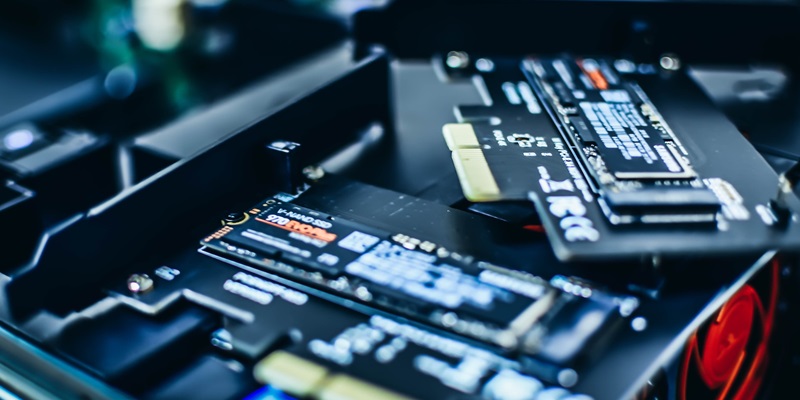Samsung is ready to make a groundbreaking announcement in the tech industry. The company has successfully developed a remarkable 280-layer QLC NAND flash, which is set to propel it ahead of competitors with its unprecedented chip density, surpassing them by up to 50%. This breakthrough has the potential to revolutionize the world of data storage and pave the way for affordable, high-capacity solid-state drives (SSDs).
Advantages of 280-layer QLC NAND
The introduction of Samsung’s 280-layer QLC NAND flash in 2024 could bring about a significant shift in consumer SSD capacities. With the ability to store a vast amount of data, these SSDs will provide consumers with ample storage space for their growing file sizes, multimedia content, and demanding applications. This advancement not only promises increased storage options but also the potential for more accessible and affordable high-capacity SSDs.
Industry recognition and competition
Samsung’s achievement in chip density is poised to dethrone its competitors, including Chinese memory maker YMTC. Currently, YMTC offers 232-layer NAND with a modest capacity of just 19.8 gigabits per square millimeter. Even industry giants like SK Hynix and Micron, renowned in the world of flash memory, are unable to surpass Samsung’s groundbreaking achievement. The development of the 280-layer QLC NAND positions Samsung as a frontrunner in the race for innovation and sets a new standard in chip density.
Limitations of high-density memory
While the high-density nature of Samsung’s 280-layer QLC NAND flash is impressive, it does come with certain limitations. This innovative memory, although capable of offering immense storage capacity, cannot sustain maximum throughput for sustained data transfers. This is due to the fact that QLC drives utilize a single-level cell (SLC) buffer. While this limitation may slightly impact performance, the overall benefits of increased storage capacity outweigh this trade-off for many consumers.
Samsung’s next-generation VNAND
The 280-layer QLC NAND flash is expected to be a part of Samsung’s upcoming V9 series, representing the ninth-generation flash technology. The company had previously announced the V9 QLC NAND with a transfer speed of 2.4 gigabits per second (Gb/s) for 2024. However, the upcoming presentation reveals an impressive increase in speed to 3.2 Gb/s, suggesting that Samsung may have exceeded its initial targets. This breakthrough could translate into even faster and more efficient data storage solutions for consumers.
Possible storage capacities
The introduction of Samsung’s 280-layer QLC NAND flash raises exciting prospects for increased storage capacities. With this level of density, the potential for vast amounts of data storage becomes a reality. While exact details on capacities are yet to be revealed, industry experts and enthusiasts eagerly await further announcements from Samsung. Currently, the company has not released any consumer drives beyond the 4-terabyte mark. However, the groundbreaking V9 technology has the potential to usher in a paradigm shift in consumer SSD capacities, exceeding current limitations and meeting the growing demands of data storage.
Samsung’s announcement of its 280-layer QLC NAND flash is highly anticipated in the tech community. This breakthrough in chip density not only positions Samsung ahead of its competitors but also presents exciting possibilities for consumers. The advent of affordable, high-capacity SSDs could transform the way individuals and businesses store and access their data. While the limitations of the new technology should be considered, the potential benefits far outweigh any compromises. With the V9 series on the horizon, Samsung is set to redefine consumer SSD capacities and solidify its position as a pioneer in the field of data storage.

